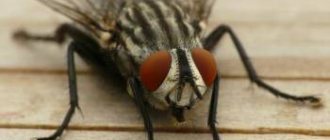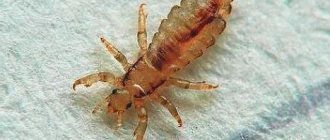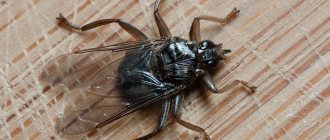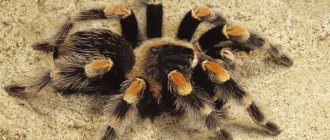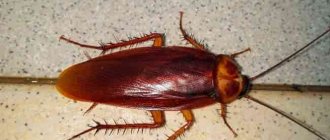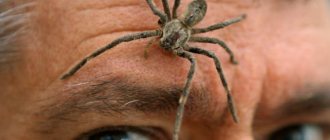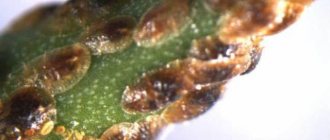Six-legged
Most insects, with all their variety of habits and sizes, have the same characteristics. So, in this case, to the question of how many legs the insects have, the correct answer is: "Six." Three pairs of limbs are observed in ants and fleas, praying mantises and weevils, and even more than a billion species.
True, the legs differ in structure, and in connection with this, oddly enough, and purpose. "How so, - you will be surprised, - are the legs really intended not only for the movement of the body on the surface?" It turns out that it is. Habitual concepts are undergoing significant changes, one has only to pay attention to the small (in size) inhabitants of the planet.
But what about centipedes and spiders?
Contrary to popular belief, and the name, the centipede has not forty legs, but only thirty. By the way, they appear very interestingly in invertebrates. At the beginning of its existence, it has only eight legs (almost a spider). Then the centipede begins to grow, the body lengthens, and additional limbs gradually grow back.
It turns out that the question of the number of centipede legs is closely related to the length of her life. And this creature treats its limbs very carelessly. I just sensed a threat, for example, a paw stuck to a web, and they just get rid of it without thinking twice. We can say that this is a kind of defense mechanism. Quite convenient, isn't it? Especially when you consider that the centipede is capable of regenerating limbs.
Spider ... Strange as it may sound, but this representative of the animal world is not an insect. It has eight legs, not six like insects, and the body consists of only two parts (cephalothorax and abdomen). In most cases, all spiders are predators, while insects mostly feed on vegetation.
Ants are considered one of the most common insects. Their introduction into an independent family happened a long time ago. Information about the first individuals can be traced back to the time of the dinosaurs.
The main signs of an ant as an insect are the following:
- colonial social lifestyle;
- the presence of a caste;
- metapleural gland;
- reduced veins on the wings;
- narrow stalk connecting the chest with the abdomen;
- upper jaws, which have a serrated chewing edge;
- lack of individual cells in larvae.
Almost all species of ants prefer to live in anthill nests, which they dig independently in completely different places, such as soil, under stones, in the trunk of trees, and also equip them directly in human housing.
Ants are considered one of the most common insects.
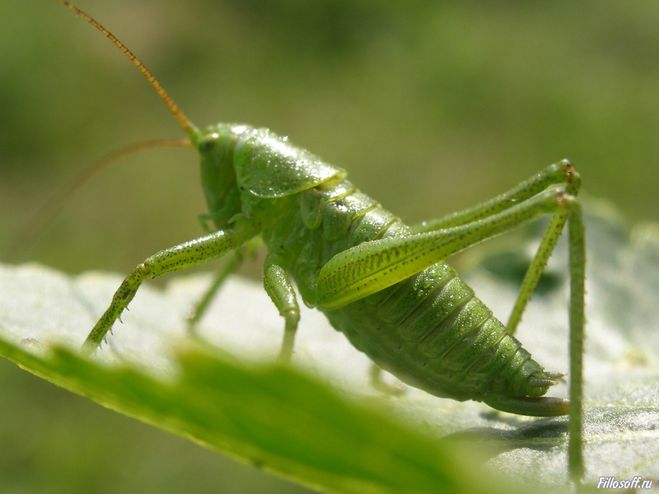
The average lifespan of this insect is about four years, but the more accurate period depends entirely on many factors. There are times when situations have been observed. That ants can live for about six years.
The structure of the first ants was very primitive compared to those insects that can be found today. The main difference between ants and other arthropods is that an ant has only six legs, while a spider, for example, has eight.Therefore, it is the spiders, although they belong to arthropods, but at the same time stand out in a separate family, which is called arachnids.
Such elementary differences in insects should be known to everyone, even schoolchildren. Unfortunately, at the moment, although schoolchildren see ants every day, not all of them are ready to answer the question of how many paws certain insects have. For example, such an elementary and well-known problem that ants and spiders have 468 legs very often remains unsolved and is vigorously discussed by users on the network of various ages.
Food
Wasp undoubtedly useful insect, successfully destroying the larvae of flies, garden and domestic pests. Eating them, wasps are indispensable, fulfilling their natural function. This becomes especially important in seasons when there are too many harmful insects for natural reasons.


From plant food, wasps prefer to eat fruits, using their pulp and juices, as well as plant nectar. This type of food fully satisfies the needs of working wasps.
But they do not so much strive to get enough of themselves, as, first of all, to feed the uterus and the offspring that it hatches. This is their responsibility. Feeding the wasp larvae, they can also feed on their belching, if it suddenly turns out that there was not enough food for them.
Especially with food it becomes difficult in autumn, because during this period small insects already disappear. And here, in order to get food, wasps often show extraordinary courage and ingenuity.
What are insect legs
The purpose of the limbs determines their name. Therefore, when you are asked: "How many legs do insects have?", Boldly answer with a question: "Which ones?" And there are adjectives, running, digging and others. Usually only one pair of limbs is special. This is due to the lifestyle of a particular creature.
We offer you to familiarize yourself with: Bark beetle: what it looks like, how to get rid of it in the house
For example, in a praying mantis, the front pair is grasping. The locust or grasshopper stands out among its congeners with a pair of jumping limbs. They are immediately striking in length and thickness. Cockroaches have running legs that are elongated. Digging limbs are observed in the bear.
They are short and plump, strong. Usually dig with the front legs. Water lovers are owners of swimming limbs. It is convenient to row with them, due to the hairs and flattening of the legs. And how many walking legs do insects have in this case? The answer depends on the species. Non-specialized limbs are used for movement. They can be considered walking.
Leg functions
As mentioned earlier, any ant has six legs, which in turn perform various functions and are equipped with spurs.
Due to their special structure, ant paws have certain abilities that these insects use not only for movement, but also during battles with other insects. Also, thanks to the special limbs, ants move perfectly on completely different planes, and there are practically no obstacles for them.
Ants can easily move not only on various surfaces, but also perform different maneuvers, as well as cling to any objects. It is as a result of the presence of such limbs that many ants are able to swim very well. This is especially true of ants - bulldogs, since these insects are considered one of the most unique.
Ants can safely move on various surfaces and make the necessary maneuvers
Among other things, it is thanks to their eight limbs that ants can perform completely different jobs. The legs of this insect are very strong and the fact that the ant carries objects that are heavy enough for its weight can be explained from the point of view of physiology.This is explained, first of all, by the fact that the cross-section of muscles with a decrease in body size is measured proportionally. That is why these very small insects are able to carry objects that weigh much more than the insect itself.
As evidenced by long-term observations of ants, these insects, thanks to their paws, can perform many different jobs, which consist in carrying food products, as well as objects that, in their weight category, significantly exceed the insect's own weight.
The ant's limbs are also necessary for him as a navigational material. This is reflected primarily in the fact that the ant perfectly remembers the number of steps that the insect has made after one or another turn. This memorization of nuances helps the ant always flawlessly find its way back to its home.
Limb structure
The ant has three pairs of legs, so it is not difficult to count how many legs it has. A feature of the limbs is also the fact that all pairs have certain sizes, proportions, and also the fact that they are all located on separate parts of the chest.
We suggest you familiarize yourself with: An insect that looks like a cricket
As for the front pair of legs, they are located on the front of the chest and are distinguished by special devices, which in their appearance more resemble miniature brushes with which the insect cleans other paws, as well as its mustache. The back pair is equipped with spurs, which, as in the first case, perform their specific functions.
One characteristic of ants' feet is that they have a scent
Thanks to the small notches that are on the legs of ants, they can not only climb freely on different surfaces, clinging to the ledges, but also develop a fairly good speed. Some species of these insects are capable of speeds of about four km / h.
I would also like to note that ants swim quite well, especially for such a species as bulldogs. These insects are able to swim across a body of water up to fifteen meters away.
Another feature of ants' feet is that they have a scent. This has been discovered through numerous scientific studies. This phenomenon is explained by the fact that the limbs of these insects secrete pheromones, which are used to leave peculiar marks during movement.
Despite the variety of species, all legs are created in almost the same way. They consist of five sections. A basin attaches the loupe to the chest. Then comes the vetluga, thigh, shin. The leg ends with a foot. Such a complex structure ensures the insect's speed and maneuverability. Any limb ends in a claw.
Specialized legs may be underdeveloped - then some elements are missing in them. Regardless of the degree of development, the number of legs in insects includes all limbs. The structure of the legs is not limited to the described elements. Each of them is divided into subsections and has options. So, for example, the presser foot can consist of several (up to five) segments. Such difficulties lead to the fact that sometimes only scientists can reliably tell how many legs an insect has. Below is an interesting example.
Public Wasps [edit | edit code]
Nests of social wasps, such as hornets, are initially built by the uterus and do not exceed walnut in size until sterile female workers are not accepted for construction. The nest building process begins with the uterus making a single layer or canopy, moving from the inside out until it reaches the edges of the cavity. Below the canopy, she builds a leg, to which she can attach several cells: it is in them that the first eggs will be laid.Then the uterus continues its work, moving outward towards the edges of the cavity, adding another level. This process is repeated, each time adding a new layer, until a sufficient number of female workers are born and mature from the first eggs, which continue to build the nest, allowing the uterus to focus only on further reproduction. For this reason, nest size is a good indicator of how many worker wasps are in a colony. Quite often, the size of a colony is several thousand female workers with only one uterus.
Bee
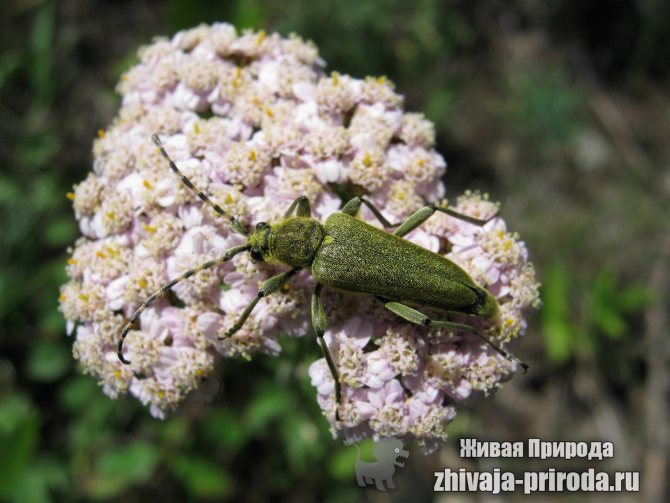

Everyone knows this work. It flies, pollinates flowers, collects honey ... And how many pairs of legs does an insect have, and are all limbs such? It turns out that the bee has special baskets on its forelimbs, in which it puts pollen. On the very last segment, the foot, there are dies called brushes.
The bee collects a valuable product with them. If you look closely, it turns out that the front pair are almost arms with a very complex structure. But scientists do not recognize this fact. These limbs belong to the legs and are called collective. Let's count the number of walking legs in bee insects.
Aristotle's fly
There is a famous legend about Aristotle and the fly. It says that the scientist claimed in one of his writings that the fly had as many as eight legs. There are several theories about the occurrence of such a statement:
1. Aristotle said this to his disciples, and they wrote down the statement.
2. The scribe of Aristotle's treatise was mistaken.
3. On the contrary, the scribes personally made changes to the text of the treatise, considering it a mistake.
Despite this, in the Russian translation of the treatise "On parts of animals" it is indicated that all insects have six legs.
The treatise also says that their eyes are hard and their eyesight is rather weak. The front legs are used to remove anything that falls on the eyes. The process of such cleaning can be observed in flies and bees, when they help themselves with their front paws, working as windshield wipers. Hind legs are larger than average. This helps with walking and makes it easier to take off from the ground.
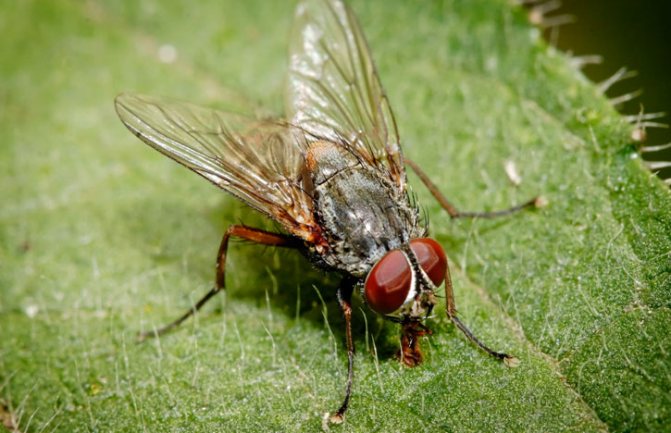

In jumping insects, the differences in leg size are even more noticeable. So, for example, when an insect straightens its legs, it still needs to rise a little to start flight. In acrid, also jumping insects, only the hind legs are adapted for jumping, because the joint must bend inward, which cannot be on the front legs.
In the same treatise, it is described that flies have only 2 wings, although it is known that there is also a second pair of wings, which is located at the back. These wings are called halteres and help the insect balance in the air. It is likely that it was them that Aristotle ranked at the feet.
Why does an ant have 468 legs and the features of these insects
Of course, the claim that the ant has 468 legs is completely unfounded. All species of ants have a constant number of limbs, which is six pieces, divided into pairs.
Ants are considered unique insects and, compared to other arthropods, have the following features:
- The sizes of these insects vary from one millimeter to five centimeters. Females are larger in size, and also have wings, which they gnaw off after the mating season. The color of these insects can be completely different.
- Ants do not have a clear vision, but at the same time they perfectly distinguish movement.
- Antennae of ants have a segmental structure and function as organs of touch. It is through them that insects sense air currents, smells and vibration.
- It is by smell that ants find food, give signals for help and various requests.
- In nature, ants use mandibles for protection, which are very powerful and acidic.
We suggest you familiarize yourself with: Insect many legs in the apartment
For the most part, ants are considered not dangerous insects for humans, but still there are varieties in nature that can not only have a negative effect on human health, but also cause death. Therefore, it is very important to know about such individuals, especially for those people who travel around the country and the world.
About neighborhood with people
Spiders most actively settle in places where food is abundant. The diet of a spider will depend on its species, but mostly insects. There are quite a lot of the latter in the warm season in the wild, however, even in summer, spiders are often found in living quarters.
So, why is this happening - why do spiders appear in the apartment? There are several explanations for this.
- Again, the abundance of insects. These can be cockroaches, bedbugs, ants and other domestic animals that multiply rapidly and constantly move around all rooms.
- Unsanitary conditions. Cluttered balconies, irregular house cleaning, mildew and mildew in the corners are ideal breeding grounds for potential spider food.
- High humidity. Most often, high humidity occurs in apartments located on the ground floors, as well as in private houses with poorly installed flooring. Plus, if there is a basement or cellar nearby, and the windows face the shady side, this only aggravates the situation. Such conditions are attractive to many insects, after which spiders will certainly be drawn.
Where do spiders come from in an apartment? They enter living quarters through ventilation shafts, through cracks in window frames, or simply on the clothes of the owners. Moreover, in the latter version, you can bring into your house not the spider itself, but its clutch, from which small spiders will subsequently hatch. And if they have something to profit from in your apartment, they will happily stay.
We offer you to familiarize yourself with: Types of spiders in the Moscow region
Why gears?
Studying the number of legs in insects of different classes, their structure and functions, scientists stumbled upon an unexpected fact. Some of them have an interesting mechanism in their structure - a gear. Schematically, it can be represented in the form of two serrated wheels that are interconnected. Through the protrusions, they interact and synchronize the movement. Why is this?
It turns out that such a mechanism makes it possible for insects to jump at great speed. This miracle lives in America, it is called Jesus. It is not capable of flying, but it jumps amazingly. Even a racing car will not be able to overtake it during takeoff. It is interesting that these legs are located not on the sides, but at the bottom of the insect.
This makes his life problematic. If you do not push off synchronously, then the jump will not work. The insect just circles on one leg. Evolution has eliminated this effect with a mechanical device, the purpose of which is to make the shocks synchronous. There was no limit to the surprise of scientists. This is the first recorded fact of the use of engineering thought in the structure of living things.
Many people get confused about invertebrate species when answering the question of how many pairs of legs do insects have. Spiders and centipedes of all kinds are mistakenly attributed to them, which is fundamentally wrong. Later we will say a few words about them, but for now we will turn our attention to the representatives of the Insects class.
Interesting Facts
In Russia, there are over a thousand types of arthropods. There are also dangerous species among them. It is noteworthy that all the masters of the web sin with poisonousness, but few are dangerous to humans. The most toxic of them are Karakurt and South Russian tarantula.They bite only if they feel a threat from people, so you should not provoke them to show aggression.
The lifespan of spiders is different. Domestic flycatchers live from several months to a year. An ancient omen says that they appear in a dwelling for money. Arthropods live longer in nature. Some representatives of Africa and South America live up to 15 years, and a female tarantula spider can live in a favorable environment for more than 20 years.
In terms of height, the champions are Goliath, which grows up to 30 centimeters, and the female Brazilian giant reddish-red tarantula, whose legs reach 26 centimeters. The most toxic in the world is also the representative of Brazil - the Traveler Spider. The result of his bite is paralysis, less often death. Children are especially vulnerable.
Respiratory organs in spiders are different and look quite peculiar. Some breathe through the trachea. Oxygen is delivered to the tissues through special holes (spiracles). Others have pulmonary sacs that resemble, thanks to the plates, book pages.
The blood of arachnids is transparent, turns blue in the air and has nothing to do with human blood. Accordingly, these predators also lack a circulatory system. But some of them are capable of jumping 50 times the length of their bodies. Fly and mosquito catchers can be found everywhere except Antarctica, where there are extreme frosts.
Water beetles
All aquatic insects are of interest from the point of view of the structure of the limbs. They demonstrate a completely different, but also unique, adaptation. Science wondered how they can be on the surface of the water and not sink? It turned out that the water beetle has a kind of oars on its hind legs.
Special hairs have grown on them, with which the insect makes rowing movements. So it floats on the water. Some species are equipped with thickened and widened segments (this is the last section of the leg). Thanks to this structure, they can perfectly float on the water. Although these insects prefer to live in calm waters. It is difficult for them to deal with a strong current. The little creature does not have enough strength for this.
Pusher flies
Pusher flies are small carnivorous insects that are found in almost all parts of the planet. These flies got this name because of their bizarre behavior. Before mating, during courtship, male pushers gather in flocks and begin to perform peculiar dances
In such an interesting way, they attract the attention of females. In countries with especially warm climates, such performances can be observed throughout the summer.
In addition to a pleasant spectacle in the form of a dance, the males achieve the location of the females with the gifts brought. Usually these are dead small flies of other species, which the female eats after mating. But quite often pusher males turn out to be very greedy gentlemen. In the most unceremonious way, they take their gifts from the female in order to attract another female for mating.
The body of the pusher fly is gray-brown in color, up to 15 mm long. The belly has 5–7 annular divisions. Wings in a state of calm fit snugly against the back. The head is small, round with a long proboscis drooping down. The eyes of males are usually as close to each other as possible. In the mouth apparatus of the fly, the lower and upper jaws are located in the form of four bristles. Insect larvae live in the ground.
Dragonfly and others
Another amazing representative of the insect world. This flyer uses her limbs in a special way. Her legs are equipped with stiff bristles. When a dragonfly flies, it positions its limbs in such a way that a kind of landing net is obtained. With this device, she gets her food! Small insects, getting into the interlacing of the bristles, immediately become prey and are eaten by the dragonfly.
The variety of ways and methods of using insect legs is truly enormous.They are not only for walking like mammals. They row, and cut, and grab. Insects also clean their antennae with their feet. For this, the limbs are equipped with special grooves. But some types of butterflies use their front legs exclusively for rubbing the eyes. These limbs are atrophied and have special hairs.
Hairline
The flycatcher's body is covered with a tough chitinous shell-armor. Its name is exoskeleton.
It performs several functions at once:
- protects internal organs from mechanical stress;
- serves as a buffer between nature and the predator's organism;
- strengthens most of the muscles;
- plays the role of a support frame.
The exoskeleton grows hairs and bristles that perform protective, sensory and tactile functions. The masters of the web do not have ears. They hear with the help of hairs located on the legs. By capturing the waves emanating from the sound source, the spider quite accurately determines the location of the object. The number of hairs on the sole of the paw reaches several thousand.
The nervous system of a predator includes only 2 nerve nodes, but the brain volume occupies from 20 to 30% of the cephalothorax. Surprisingly, these creatures can even distinguish colors, and special sensitive hairs on their legs help them recognize smells. Arthropods also have chemically sensitive hairs on their limbs. With their help, the fly catcher determines whether his victim is poisonous.
The life of a spider is eventful. To feed, he has to constantly weave nets, catch prey. Over time, the exoskeleton wears out, and the predator changes it through molting. Together with the chitinous armor, the hairline also changes. If before this the spider's paw was torn off, a new one will grow back in the process of molting.





